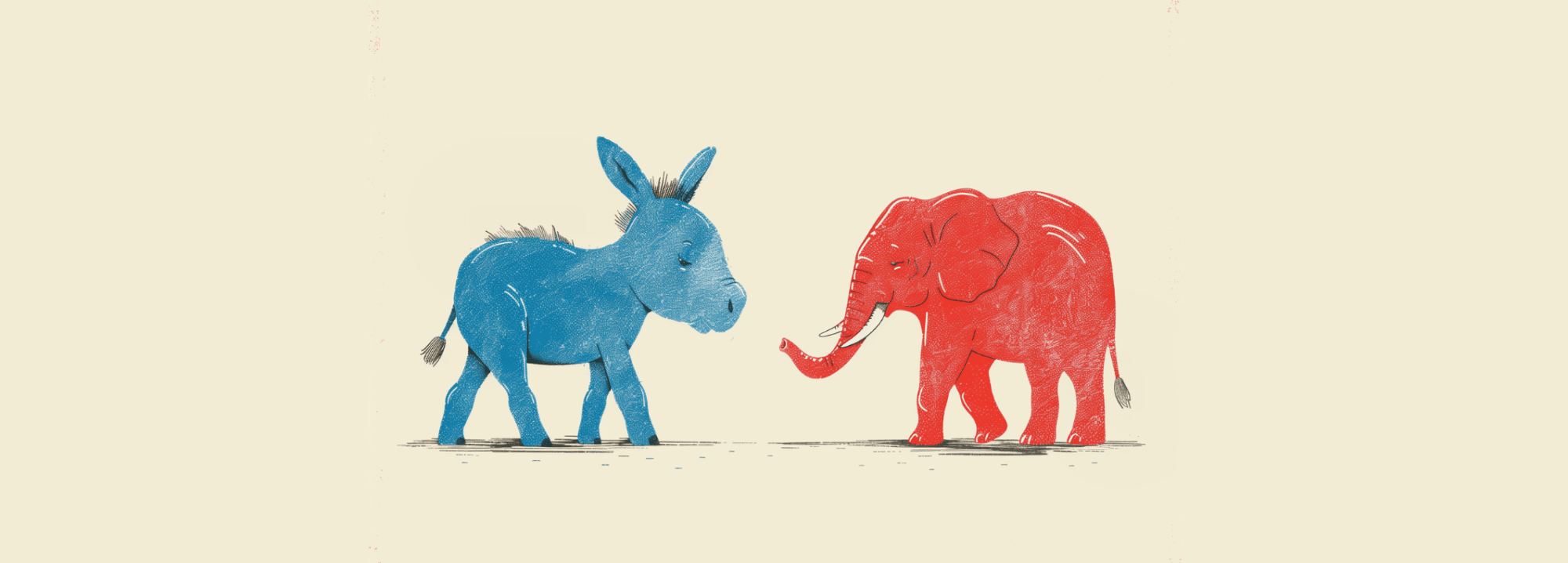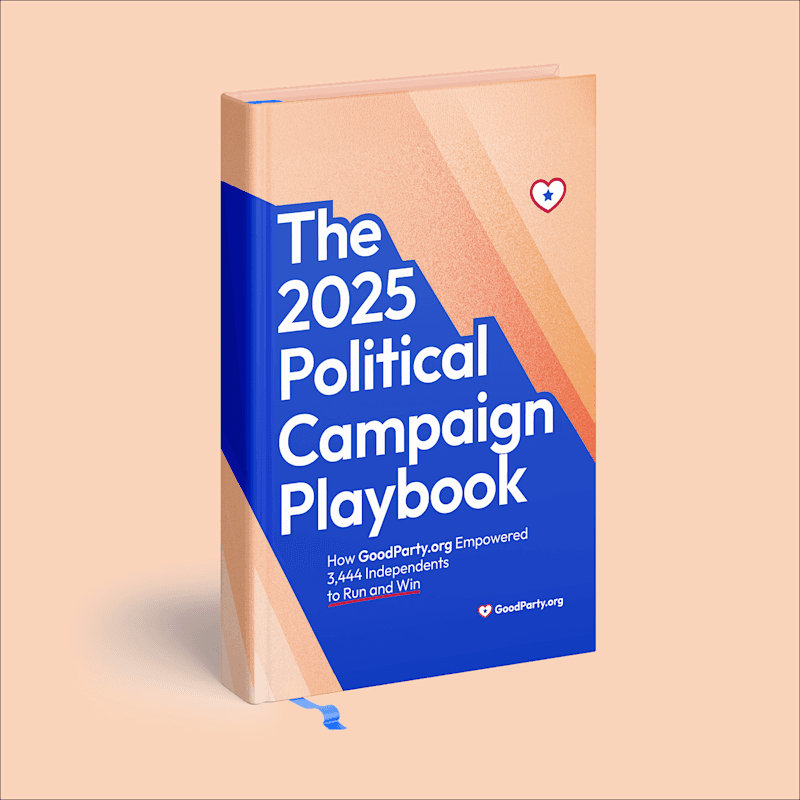
How Duverger's Law Influences the Two-Party System
The nations of the world include a diverse collection of political systems. Some have frequent turnover in their ruling parties, while others can have the same rulers for decades. Some have multiple political parties, while others feature just one or two dominant parties.
Political scientists work to understand why these differences exist, and why certain systems tend to prevail. One outcome of this work is Duverger’s Law, an explanation linking the winner-takes-all electoral system with the emergence of two major parties that overshadow smaller ones.
The Basics of Duverger’s Law
At the most basic level, Duverger’s Law asserts that when a democracy uses a winner-take-all or first-past-the-post system, a two-party system is also likely to develop. In other words, when an election results in the victory of just one candidate, whether or not that candidate has earned the majority of the vote, two political parties are likely to dominate the political landscape.
Here is the core of Duverger’s Law, broken down:
Systems where elections produce only one victor encourage two-party dominance.
In this kind of political system, systemic disadvantages discourage third parties and independent movements from growing in political strength.
Alternatively, political systems that use proportional representation often enjoy the presence and participation of multiple political parties.
The History of Duverger’s Law
The late Maurice Duverger was a 20th-century lawyer, professor, and member of the European Parliament. During the 1950s, he posited that when a political system awards a numerical winner (the candidate who gets the most votes) with representation of the entire political entity (the ward, district, state, or country), instead of splitting the governance among multiple candidates, such a system will give rise to the political preeminence of two rival parties. Under such a design, third parties operate at a disadvantage. Smaller, independent parties will ally with a dominant party when laws favor the plurality of votes in a single-member district — one represented by a sole officeholder.
Maurice Duverger was less a philosopher and more of a pragmatist. His political research centered on what worked, as opposed to what was good and right. The more he researched elections and voting patterns, the wider the gap he perceived between people’s aspirations and the office-holders that ruled over them. Affiliated with the Sorbonne and the University of Bordeaux, he became close to the cause of the French Resistance during World War II and published his thoughts in numerous media outlets. After the war, Duverger came to believe in the principles espoused by Josef Stalin and the Soviet Union. Yet the election system captivated his interest and, in 1951, he published Les Partis Politiques, a summary of his thoughts on the election system and the precursor to Duverger’s Law. In it, he distinguished between elite-based and mass-based parties. The former depend on their reputation and public goodwill toward their representatives; the latter call for greater investment and participation by rank-and-file party members.
This work was foundational for the development of Duverger’s Law.
Duverger’s Law and the United States
The United States is a perfect example of Duverger’s Law at work. A democratic republic, the U.S. has experienced two-party politics for almost the whole of its existence. In most states, office holders at every level of government are only required to bring in a plurality of votes to win their elections and rise to their desired positions. U.S. history is the story of two-party conflict: Federalist vs. Democratic-Republican; Democrat vs. Whig; and ever since, Democrat vs. Republican. The two-party system remains the constant, though the parties in power have occasionally changed.
Below, we’ll explore how Duverger’s Law appears in different contexts:
Duverger’s Law in Presidential Elections
The U.S. Constitution provides for the election of a president through the Electoral College. At the time of the nation’s founding, the framers of the document were faced with the choice of Congress or the people electing the chief executive. The Electoral College balanced populist and elitist elements, creating a kind of middle ground. Since the predecessor document, the Articles of Confederation, had the executive elected by Congress, the Electoral College represented a step toward rule by the people. Today, many Americans call for an end to the Electoral College system, seeking replacement with a direct popular vote. Others believe the current design keeps mob rule at bay.
Under the Electoral College, each state is allotted a number of electors, which matches the number of senators and representatives in its congressional delegation. When residents of the state vote for president, they are voting for electors who are pledged to vote for a certain candidate. The electors’ names do not appear on the ballot; only those of the candidates. Crucial to this process, at least in practice, is the expectation that the winner of the popular vote in the state gets the votes of all of the state’s electors. Successful presidential candidates can boast of how many states were won even if the national vote swings against them.
To date, only nominees of a dominant political party have won the vote in the Electoral College or gained a plurality of total individual votes. This fact is telling. Winning candidates for president need not win over a majority of U.S. voters, but simply a majority of voters in the right states. Those who did not support the winning candidate, even if they outnumber those who did, are in no way acknowledged by the result.
In 1992, Democrat Bill Clinton won the presidency by garnering just 43 percent of the popular vote yet winning 370 electoral votes. The preferences of 57 percent of voters were set aside because that percentage was divided between Republican George H.W. Bush and third-party candidate Ross Perot. Many Republicans believed that Perot was a “spoiler.” Had Bush captured the votes that Perot earned, he would have won the overall popular vote as well as the electoral votes in a sufficient number of states.
1992 and its aftermath are a reasonable corroboration of Duverger’s Law. A third-party or independent movement made enough headway to impact election results, but the impact was to the advantage of a dominant political party. Going forward, most of the voters backing the independent movement decided that their votes were best invested with one of the two major parties – whichever one they found less objectionable. Hence the two-party system remained intact. This is Duverger’s Law at work.
Exceptions to the Rule?
Duverger’s Law in America has few exceptions, but there are occasional anomalies.
In 1998, for example, former professional wrestler Jesse Ventura won the governorship of Minnesota on Perot’s Reform Party ticket. A combination of celebrity, charisma, and strong voter support propelled Ventura into the state house. However, since Ventura did not act as a strong advocate for the Reform Party, the party’s influence in Minnesota declined after Ventura left office.
Outside the United States: Proportional Representation
There are many nations that use proportional representation instead of a winner-take-all or first-past-the-post system. Among others, the following countries use proportional representation:
Argentina
Australia
Austria
Belgium
Brazil
Finland
Germany
Greece
Guyana
Ireland
Japan
Nepal
Peru
Poland
South Africa
Sweden
Switzerland
Taiwan
Turkey
Ukraine
In these countries, smaller political parties are more likely to maintain some representation in parliaments and legislatures. These smaller parties often optimize their influence by building coalitions with one another.
Here too, then, Duverger’s Law is at work. The structure of the electoral system influences the number of political parties that have a significant impact in their countries.
Considering Alternative Voting Systems
An increasing number of Americans have expressed dissatisfaction with the current political system. Many voters resort to voting for the “lesser of two evils,” rather than for a candidate they truly prefer. People experience a lack of fair and adequate representation, as politicians get elected who don’t truly represent their interests.
That’s why there’s also a growing number of Americans who are ready for change. Are you one of them?
You can get involved by volunteering to support independent candidates who believe in putting an end to the two-party system. You can also learn more by exploring more resources focused on electoral reform.

